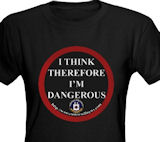Smile, You’re on Candid Face
Recognition Software
May 15, 2000
by Adam Peeler
Computer software that never forgets a face - or at least the skull
behind it - is coming to the aid of police departments in Canada and the U.S.
Imagis Technologies Inc. (OTC BB: IGSTF), an eight year-old company
based in British Columbia makes
software that recognizes a person's
face if they appear in front of a security
camera and matches it to a database of
known offenders, providing an exact
identification of that person.
The software, called CABS (which
stands for computerized arrest and booking system), is based on biometrics
- an area of technology that recognizes people from their personal
characteristics. Other forms of biometrics include fingerprint and iris
identification.
Imagis CEO Iain Drummond says CABS software provides a powerful and
efficient tool for law enforcement officials who want to identify someone they
suspect is giving them an alias.
“What happens with our system is the cops take a video image of someone
who has been arrested and our software scans the central area of the face
and the bone structure,” said Drummond. “We’re not looking at things like
hair or beards or anything that can be changed. We center in on the eyes,
the bridge and tip of the nose and calculate angles and ratios based on that.”
Then, said Drummond, the software performs a high-resolution scan of the
area. It picks up about 250 points reflecting things like the angle of the eye
socket, location of cheekbone and other features.
From that, says Drummond, the software uses “mathematical processes” to
produce a digital signature of one’s face which is about 60 bytes long.
“The only way to avoid being recognized is to go a plastic surgeon and the
surgery would have to be pretty major,” he laughed. “The benefit of facial
recognition is the individual doesn’t have to do anything like roll a finger in
ink. It’s efficient and it’s not intrusive.”
Drummond said the system's accuracy is “extremely high” but he admits it's
not perfect.
"The accuracy depends on the quality of the image that is captured," he
said. "An obvious analogy is if you're looking at someone across your desk,
you'll recognize them immediately. If it's 50 yards away and it's dark and
raining, you may suspect it's someone but you can't be sure. If we take a
controlled application like a police booking when the guy is six feet from the
camera, the quality will be extremely high. But I'm reluctant to put a number
on that."
He said fingerprinting, as long as it's all ten fingers, is “conclusive” and more
accurate than face recognition but takes longer. Iris identification is the most
accurate of the three processes.
The Vancouver Police Department, the Royal Canadian Mounted Police, and
other law enforcement agencies in North America, including the Hayward
Police Department in California are currently using the software.
: Lester B. Pearson Airport in Toronto is one of North America’s busiest
transportation centers. The RCMP has a detachment stationed at Pearson
and they use the software to help identify criminals coming in and out of the
airport.
RCMP Constable Bob Hillier says the identification software does the job.
“The advantage of this is you can incorporate all your information together,”
he said. “It’s another technique to fight crime when you use it with all the
other techniques.”
Imagis was formed in 1992 from two companies, one of which was involved in
satellite imagery which Drummond says gives Imagis a “strong skill set in
pattern recognition.” The company’s Chairman, Buck Revell, was associate
deputy director at the FBI before he retired.
Drummond adds law enforcement is the company’s key vertical market and
Imagis can sell it around the world because it can be downloaded in a variety
of languages.
He lists privately-held Visionics Inc. in New Jersey as competition.
Drummond says the software can also be used at commercial
establishments.
“Gateway Casino in Burnaby (B.C.) uses our software to check its own data
base of blacklisted people they don’t want in their casino. In the control room
of the casino, they get a message flashed on the screen saying “Look at this
person.”
He said in theory if the blacklisted person in the casino was on the RCMP’s
wanted list, the system could be set up to alert the police. However, a
provision in Canadian law that looks after the privacy of its citizens shuts the
door on that marketing opportunity.
The RCMP’s Hillier said the police could use the system to randomly scan
the crowd at Pearson Airport because it’s a public building. But right now it
would cost too much to use it in a broad manner so the RCMP uses it on
suspects they bring into the station.
David Wong, a technology analyst at Canaccord Capital has had
discussions with Imagis because its software caught his attention. He
doesn’t officially cover Imagis so he was reluctant to get into a lot of detail
about the company itself but he says biometrics is an intriguing space to be
in.
“Getting the RCMP contract is a good testimonial going forward because you
need someone to say your product works and it’s great,” said Wong.
“Biometrics is going to be more popular as security requirements become
increasingly more important. As we go global and have increased access to
information, there’s going to have be the ability to screen out who is allowed
to have access to what information.”






































